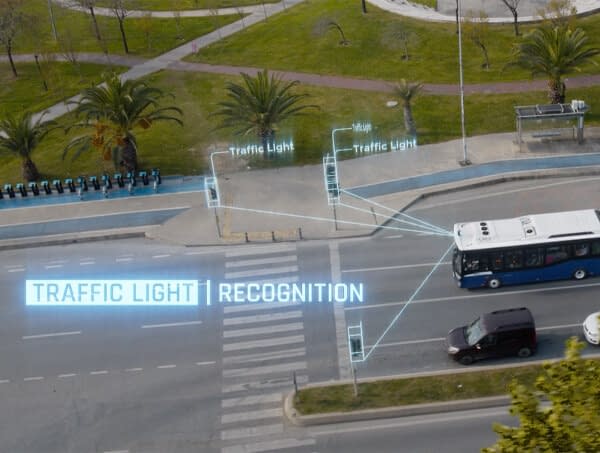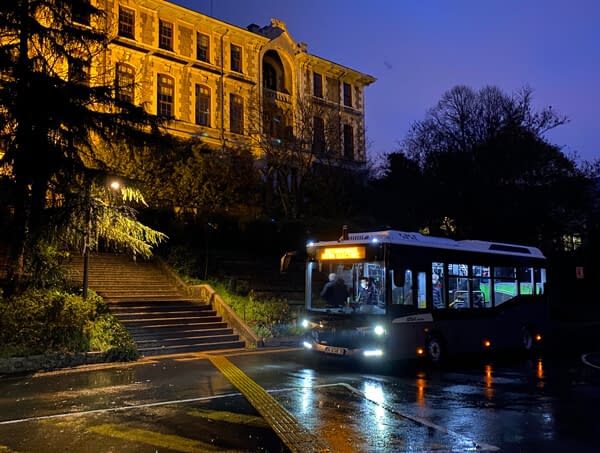CASE STUDY
Industry: Autonomous Vehicles
Product: Triton 5.4 MP Feat. IMX490 HDR
SDK: flowride.ai
World’s First Level-4 Autonomous Electric Bus Uses Triton Cameras with flowride.ai
Autonomous research has come a long way in recent years, however “road safety” of fully self-driving vehicles, especially in public transportation, still has some hurdles to overcome. Many features used in autonomous vehicles today rely on systems that apply machine learning patterns to infer which objects are in a scene. There are two important forms of inferencing – object detection and object distance. Object detection uses inferencing to find objects on the road and categorize them, so it can identify familiar objects with high accuracy. Object distance on the other hand, determines the distance of objects in the scene. Inferencing for object distance can be a greater problem, as the vehicle will need to slow down or speed up, and miscalculating the difference of even a few meters could result in a crash.
At the beginning of February 2021, the California-based tech company ADASTEC specializing in autonomous driving software platforms, partnered with one of Turkey’s leading automotive manufacturers and presented their jointly developed first electric Level-4 Autonomous 8.3 meter bus. The 100% electrically powered and self-driving bus was declared road-worthy for the highways and streets of Europe and the USA. This marked an important milestone in their autonomous journey, making it the first Level-4 full-size self-driving electric bus in its segment.
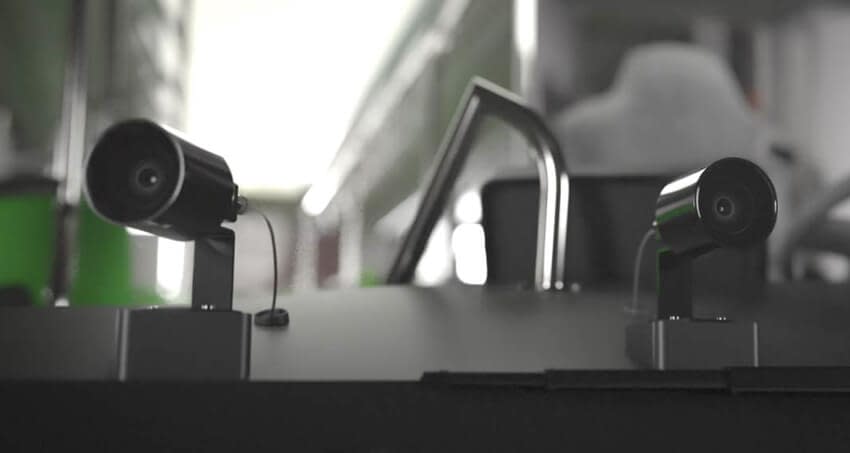
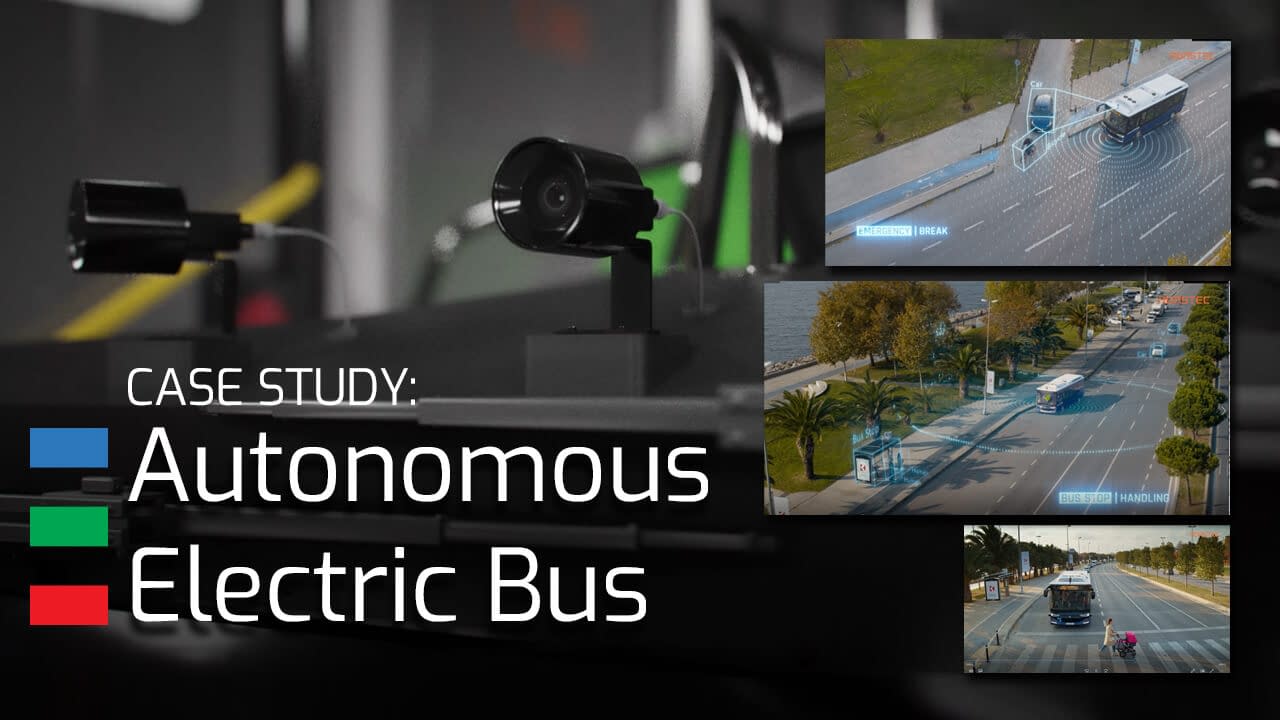
Challenge
Level-4 Autonomous Driving requires pre-defined and dedicated roads, localization, perception, prediction and path planning problems solved at every instant and control of the vehicle on the road. Until now Level-4 Autonomous Driving solutions for public transportation had only been implemented on small prototype vehicles with limited passenger capacity, slower speeds and no road legality for city usage. They had not been optimized and integrated for use with full size OEM buses.
ADASTEC was using different sensor technologies on the bus: LiDAR, RADAR, RGB and thermal cameras to perceive and predict the vehicle’s and nearby entities locations and status under various lighting and weather conditions. The sensors needed to be reliable and perform under design specific parameters for the safety and success of the autonomous driving platform.
Solution
ADASTEC’s automated transportation platform, flowride.ai, delivers the most advanced Level-4 automation platform for full-size commercial vehicles currently available. The flowride.ai is designed for large scale public transport along pre-defined routes on public roads. The platform allows OEMs to build the best automated bus configurations to meet the needs of the operators.
LUCID’s 5.4 MP Triton cameras are used as perception sensors with three cameras being installed on the front dashboard of the bus. The Triton TRI054S cameras featuring the Sony IMX490 (BSI) back-illuminated CMOS sensor allow for simultaneous imaging with 120dB of dynamic range and LED flicker mitigation. With their large 5.4 megapixel, 2880 x 1860 pixel resolution running at 23.1 fps, the cameras enable a wide-angle field of view and high precision recognition in both daytime and nighttime for Advanced Driver Assistance Systems (ADAS) and Autonomous Driving.
The Triton’s target brightness provides dynamic calculation of gain and exposure, enabling improved perception regardless of the time of the day and lighting conditions. ADASTEC uses the camera’s Precision Time Protocol (PTP) to synchronize the clock of each camera so that the 3D view calculations are automatically synchronized. “The Triton cameras allowed us to capture a wider angle of view, enabling the sensors to recognize traffic conditions and objects such as obstacles, signs, and traffic signals,” says Kerem PAR, CTO at ADASTEC. “In addition, throughout the integration process LUCID provided excellent customer support with practical solutions whenever we had in-depth technical questions.”
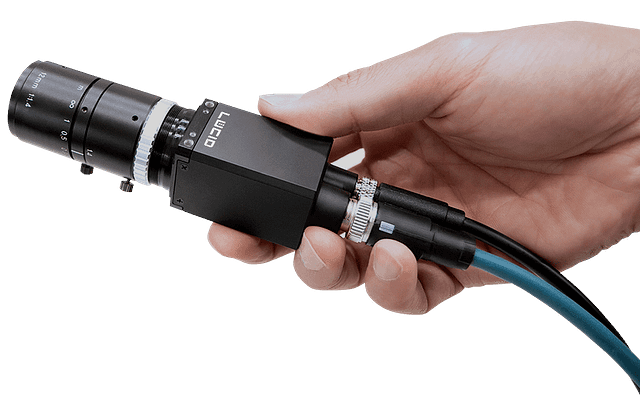
Conclusion
The President of Turkey, Mr. Recep Tayyip Erdoğan, was the first Head of State to ride on the autonomous bus on February 1st, 2021. The 9-minutes long ride was conducted in the Presidential Palace Campus in Ankara, showcasing various automated driving scenarios and was broadcasted live.
Deploying high-tech autonomous solutions aimed for a safe, comfortable and efficient driving experience will continue to meet the demands in public transportation and find broader adaption in the near future. As a pioneer in its segment, the 8.3-meter-long electric bus can carry over 52 passengers and is powered by 220 kWh batteries, making it highly efficient on the road, and at the same time supporting the move towards cleaner energy.
To learn more visit:
ADASTEC (Delivering the most advanced Level-4 automated transportation platform for full size commercial vehicles)

 Support Center
Support Center

